Mineral Nutrients
- Plant mineral nutrients play an essential role in the plant's life cycle; there are 14 mineral nutrients that are recognized as essential for normal plant growth and development.
- Essential nutrients are not simply plant food necessary for optimum plant growth and yield, they also influence plant resistance or susceptibility to pathogens and pests.
- Nutrients aid in the formation of mechanical barriers, primarily through the development of thicker cell walls and the synthesis of natural defense compounds (phytoalexins, antioxidants, and flavonoids) to provide protection against pathogens.
Benefits of Plant Nutrition Management
- Balanced and complete nutrition can help trees in performing proper functions.
- Mineral nutrition is an environmental factor that can be controlled in agricultural systems.
- Proactive and timely nutrition management can enhance a plant's efficiency to absorb nutrients. Consistently available macro and micro nutrients improve metabolism and other processes in the plant.
Nutrition Balance and Disease Resistance
- Plants with an optimal nutritional status have the highest tolerance to pests and diseases. Any nutritional deficiency hinders plant metabolism and results in a weakened plant, which may lowers disease resistance. Disease susceptibility increases as nutrient concentrations deviate from the optimum.
- The goal is to maximize yield and the potential for disease and pest control through mineral nutrition and fertilizer applications.
Nitrogen (N)
Deficiency Symptom: entire leaf yellowing of old leaves
Function: vegetative growth, flowering, fruit yield
Application Method: foliar and soil

Phosphorus (P)
Deficiency Symptom: fruit has thick rind and hollow core; leaf symptoms are rare in Florida
Function: photosynthesis and plant energy
Application Method: foliar and soil
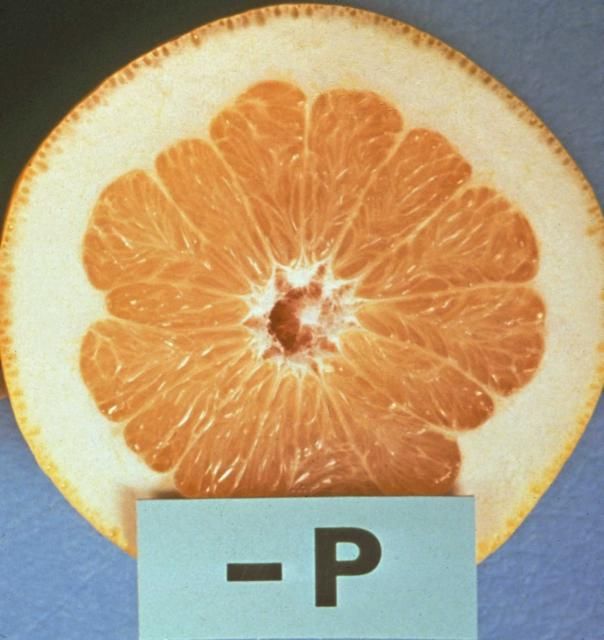
Potassium (K)
Deficiency Symptom: yellowing of the tips and margins which becomes broader
Function: yield, fruit size, juice quality
Application Method: foliar and soil
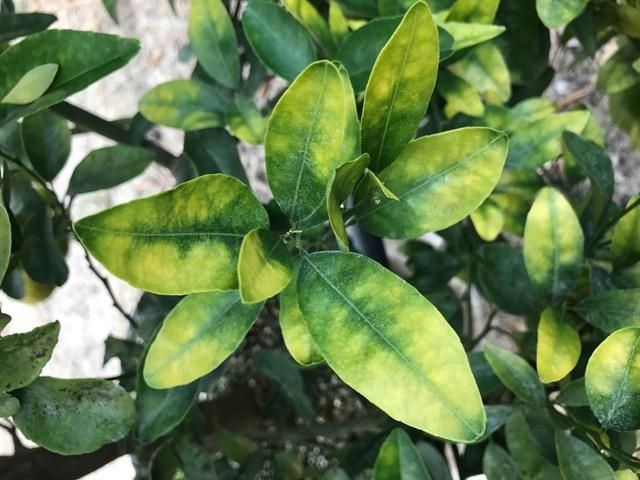
Calcium (Ca)
Deficiency Symptom: yellowing of leaf margins; small, thickened leaves
Function: important component of cell wall (overall tree growth)
Application Method: foliar and soil

Magnesium (Mg)
Deficiency Symptom: inverted 'V' pattern at base of leaf
Function: main element in chlorophyll; aids in photosynthesis
Application Method: foliar and soil

Sulfur (S)
Deficiency Symptom: pale green to yellow in color on new growth
Function: protein synthesis, amino acid, chlorophyll production
Application Method: foliar and soil
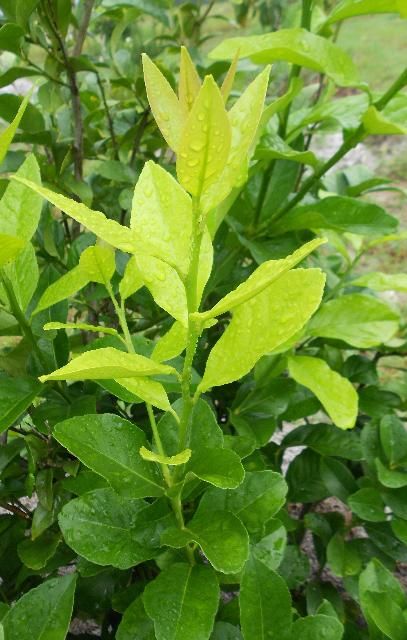
Iron (Fe)
Deficiency Symptom: green veins on a light green leaf; symptoms appear first on new foliage
Function: essential for synthesis of chlorophyll and energy production
Application Method: soil
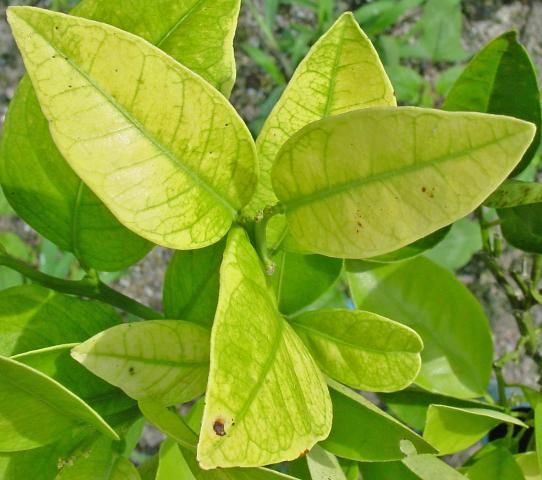
Copper (Cu)
Deficiency Symptom: 'S' curved branching, inter-nodal stem gumming, twig dieback
Function: proper enzyme activity and metabolism; plays essential role in chlorophyll formation
Application Method: foliar and soil
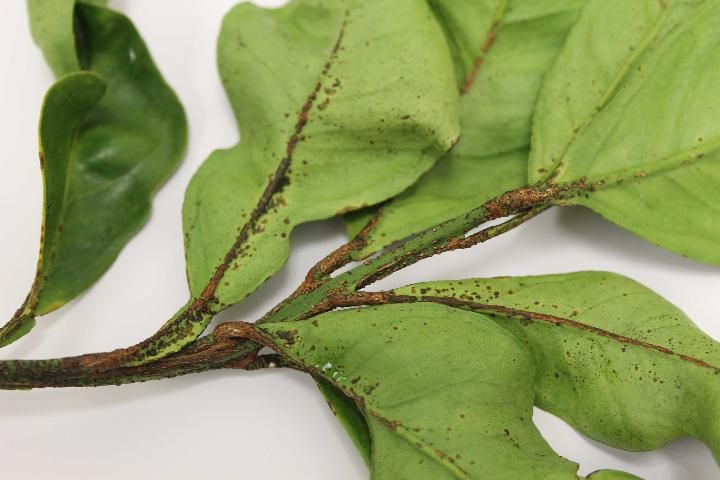
Zinc (Zn)
Deficiency Symptom: leaf is yellow with green veins
Function: plant metabolism, growth-promoting substances in plants (auxins)
Application Method: foliar and soil (soil applications are not recommended on calcareous soils)
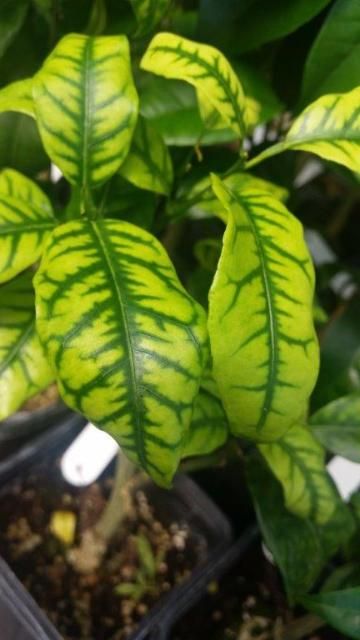
Manganese (Mn)
Deficiency Symptom: dark green bands along midrib and main veins surrounded by light green interveinal areas
Function: energy metabolism
Application Method: foliar and soil (soil applications are not recommended on calcareous soils)
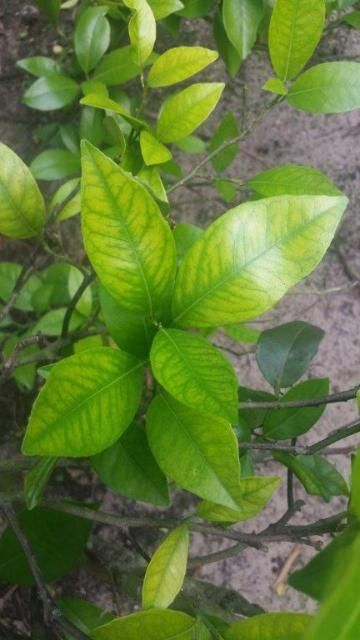
Boron (B)
Deficiency Symptom: corky veins
Function: movement of sugar in phloem; translocation of sugar
Application Method: foliar and soil

Molybdenum (Mo)
Deficiency Symptom: large interveinal yellow spots
Function: plant protein formation
Application Method: soil or foliar
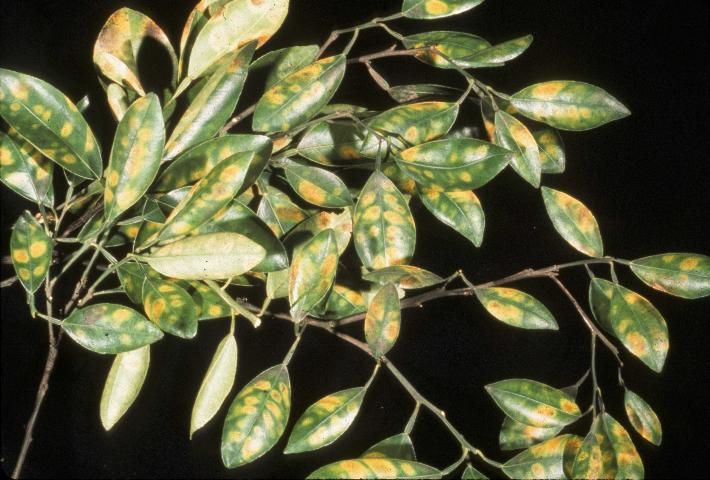
The role of Chlorine (Cl) and nickel (Ni) in citrus trees is not well defined.
Liebig's Law of the Minimum
- The leaky barrel illustrates Liebig's law of the minimum.
- Just as the capacity of a barrel with unequal length staves is limited by the shortest stave, so too is a plant's health, growth, and yield limited by the nutrient in shortest supply.
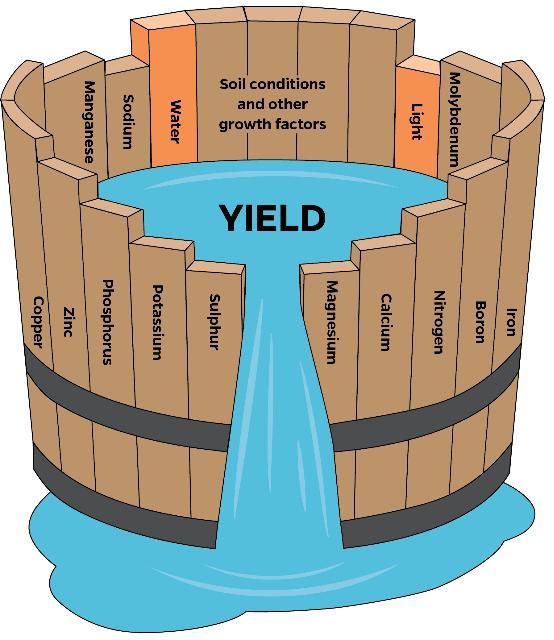
Credit: UF/IFAS Communications
The Right Nutrient Program Stewardship for Best Management Practices (BMP)
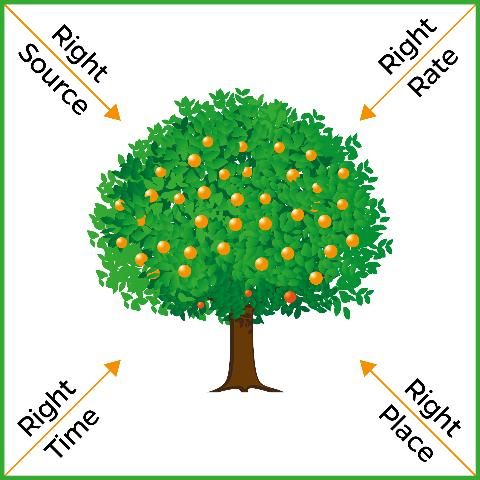
Resources
Nutrition of Florida Citrus Tree, Second Edition. Edited by Thomas A. Obreza and Kelly T. Morgan
A Guide to Citrus Nutritional Deficiencies and Toxicities. Steve Futch and D.P.H. Tucker
The Critical Importance of Citrus Tree Nutrition. Mongi Zekri
Photo Credits: Mongi Zekri, Tripti Vashisth, UF/IFAS Communications, and R.C.J. Koo